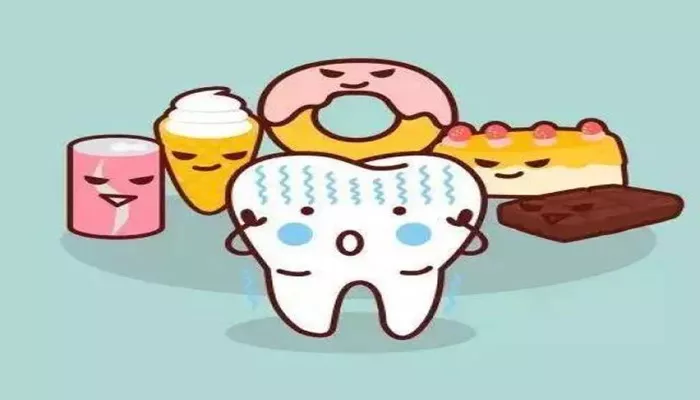Cavities, also known as dental caries, are areas of tooth decay caused by the breakdown of tooth enamel and dentin. They are a result of prolonged bacterial activity in the mouth, which produces acids that erode tooth structure over time. Cavities often start as small, seemingly harmless spots but can progressively worsen, leading to significant tooth damage and, ultimately, tooth loss.
Causes of Cavities
Poor Oral Hygiene: Not brushing teeth regularly, not using dental floss, or inadequate brushing techniques can allow plaque to build up on teeth. Plaque is a sticky film of bacteria that feeds on sugars and starches from food and produces acids. These acids attack tooth enamel, gradually wearing it down and leading to cavities.
Dietary Factors: Consuming foods and drinks high in sugar and acid content can increase the risk of cavities. Bacteria in the mouth feed on these sugars, producing more acid that can erode tooth enamel.
Genetics: Some people may inherit weaker tooth enamel or a higher susceptibility to bacterial infections, making them more prone to developing cavities.
Dry Mouth: Saliva helps to neutralize acids in the mouth and wash away food particles. People with dry mouth, whether due to medications, medical conditions, or other factors, may have a reduced ability to fight off cavity-causing bacteria.
Progression of Cavities
Initial Stage: Cavities begin as small, shallow lesions on the tooth surface. At this stage, they may be asymptomatic or cause mild sensitivity to sweets or cold.
Moderate Stage: As the cavity deepens, it may begin to affect the dentin layer of the tooth, which is softer and more sensitive than enamel. Symptoms may include pain, especially when eating or drinking something hot, cold, or sweet.
Severe Stage: If left untreated, cavities can reach the pulp chamber of the tooth, containing the nerve and blood supply. This can lead to severe pain, infection, and potential tooth loss.
What Happens When Cavities Fall Out?
When a cavity reaches a critical stage, it can cause significant structural damage to the tooth, leading to its partial or complete loss. Here’s a step-by-step breakdown of what happens:
Enamel Erosion: The first line of defense, tooth enamel, is eroded by acids produced by bacteria. This creates a small hole or lesion on the tooth surface.
Dentin Invasion: As the cavity progresses, it moves through the enamel and into the dentin layer. Dentin is softer and more porous than enamel, allowing the cavity to spread more rapidly.
Pulp Exposure: If the cavity reaches the pulp chamber, it can cause inflammation, infection, and severe pain. The pulp contains nerves and blood vessels that are vital for tooth health.
Tooth Fracture: A severely weakened tooth is prone to fracture. The broken tooth may fall out partially or completely, leaving a large hole in the mouth.
Bone Loss: In the absence of a tooth, the surrounding bone may begin to resorb or shrink. This can affect the stability of adjacent teeth and the overall structure of the jaw.
Infection and Inflammation: An exposed cavity or tooth stump can become infected, leading to gum inflammation, pain, and potential spread of infection to other parts of the body.
Consequences of Cavity Fallout
Pain and Discomfort: A fallen-out cavity often results in severe pain, especially if the pulp is exposed or infected. This can affect daily activities, such as eating, drinking, and sleeping.
Chewing Difficulties: A missing tooth can make chewing food difficult, leading to improper digestion and potential nutritional deficiencies.
Speech Impairment: Missing teeth can affect speech, causing lisps or slurred speech, especially if the missing tooth is in the front of the mouth.
Self-Esteem Issues: The appearance of missing teeth can negatively impact a person’s self-esteem and confidence.
Increased Risk of Dental Problems: A missing tooth can lead to shifting of adjacent teeth, increased plaque accumulation, and potential development of additional cavities or gum disease.
Treatment Options for Cavity Fallout
Fillings: If the cavity is caught early, a dentist can fill it with a material such as amalgam, composite resin, or porcelain to restore the tooth’s structure and function.
Crowns: For larger cavities or teeth with significant structural damage, a crown may be placed over the tooth to provide added support and protection.
Root Canal Therapy: If the pulp is infected or inflamed, root canal therapy may be necessary to remove the pulp and fill the canal with a inert material. A crown is usually placed over the tooth after root canal treatment.
Extractions: In some cases, especially if the tooth is severely damaged or infected beyond repair, extraction may be the only option.
Implants and Bridges: To replace missing teeth, dental implants or bridges can be used. Implants involve placing a titanium post into the jawbone to support a crown, while bridges involve using adjacent teeth to support a pontic (false tooth).
Partial or Full Dentures: For patients missing multiple teeth, partial or full dentures can be used to restore chewing function and improve aesthetics.
Prevention of Cavities and Tooth Loss
Good Oral Hygiene: Brush teeth at least twice a day with fluoride toothpaste, floss daily, and use an antiseptic mouthwash to reduce plaque and bacteria.
Balanced Diet: Avoid sugary and acidic foods and drinks. Eat a balanced diet rich in fruits, vegetables, lean proteins, and dairy products to support dental health.
Regular Dental Check-ups: Visit the dentist regularly for cleanings, exams, and early detection of cavities.
Sealants and Fluoride Treatments: Dental sealants can protect molars from decay, while fluoride treatments can strengthen tooth enamel.
Avoid Tobacco Products: Smoking and chewing tobacco increase the risk of gum disease, tooth decay, and oral cancer.
Conclusion
In conclusion, cavities are a common dental problem that can lead to significant tooth damage and, ultimately, tooth loss if left untreated. By understanding the causes, progression, and consequences of cavities, as well as the available treatment options and prevention strategies, individuals can take proactive steps to protect their dental health and maintain a healthy, beautiful smile.
Related topics:

